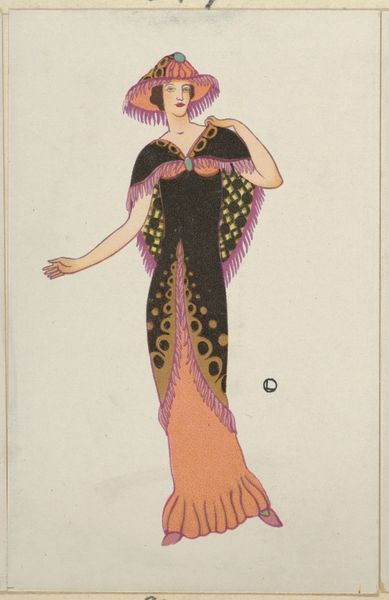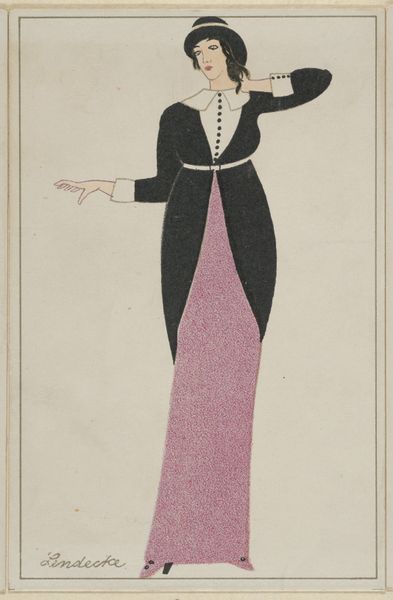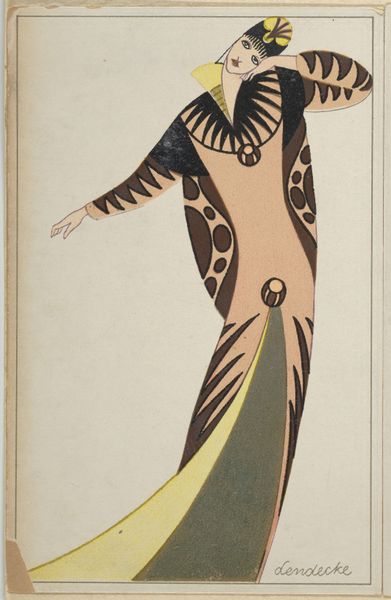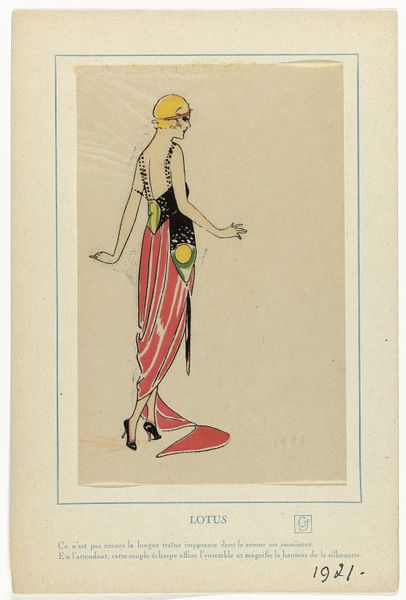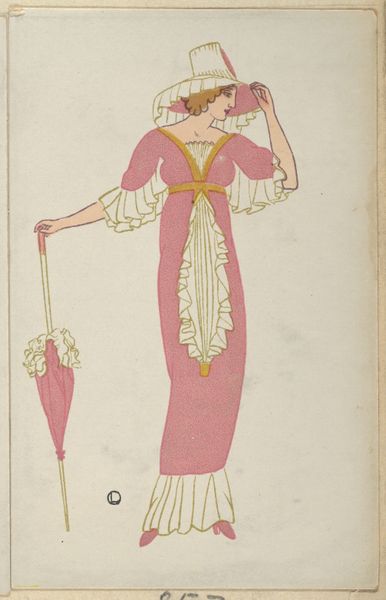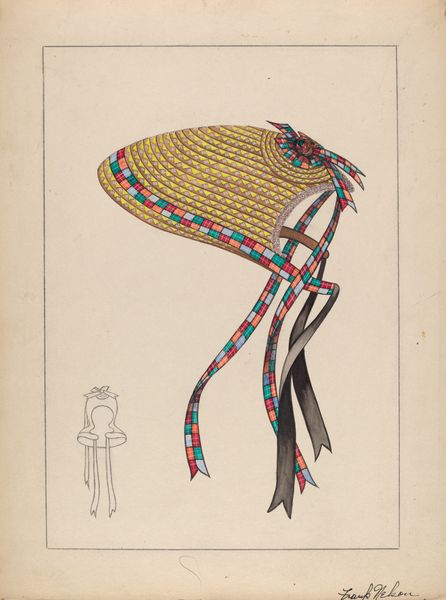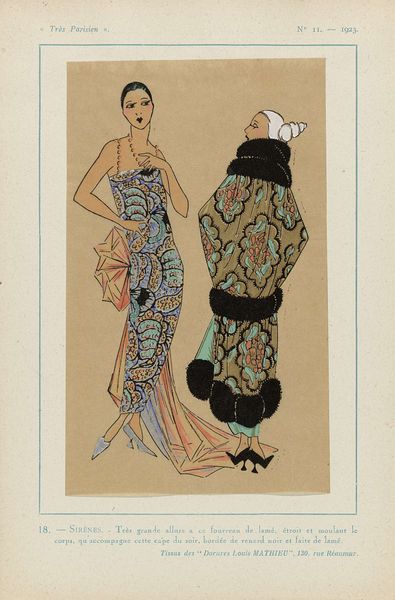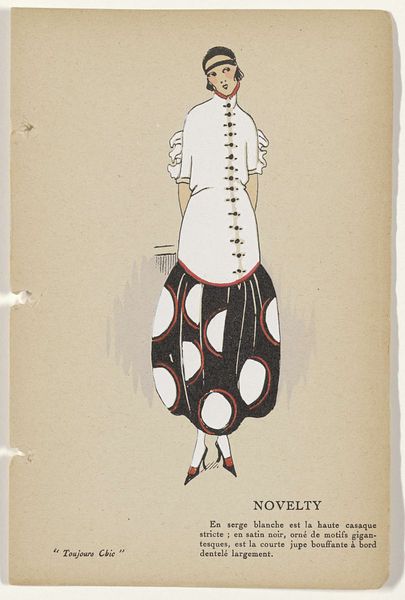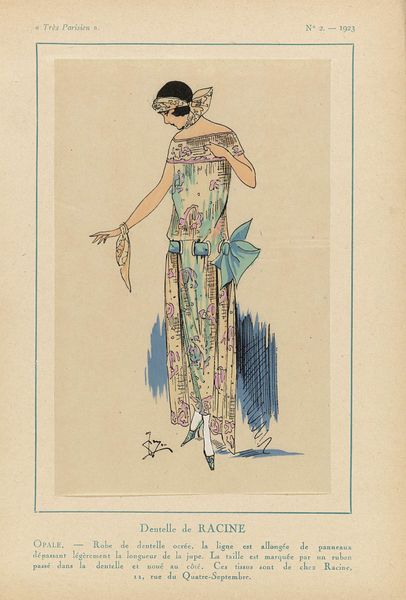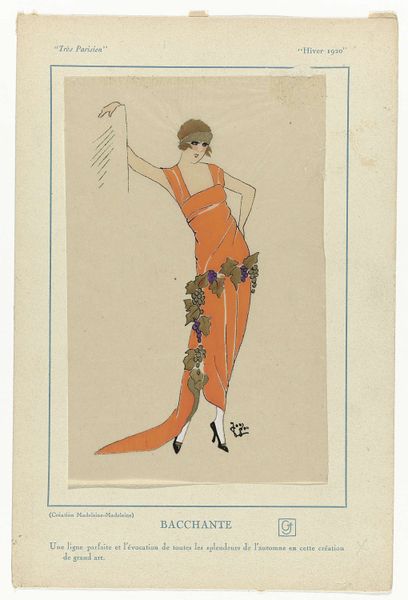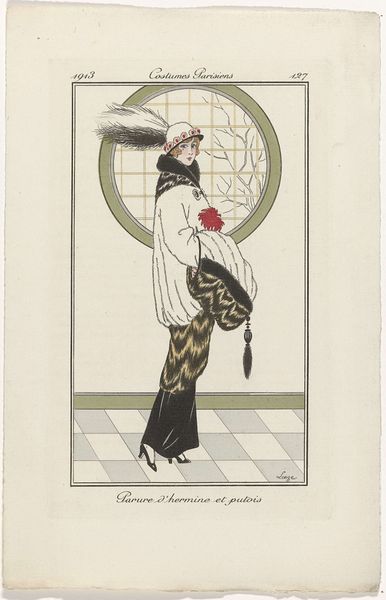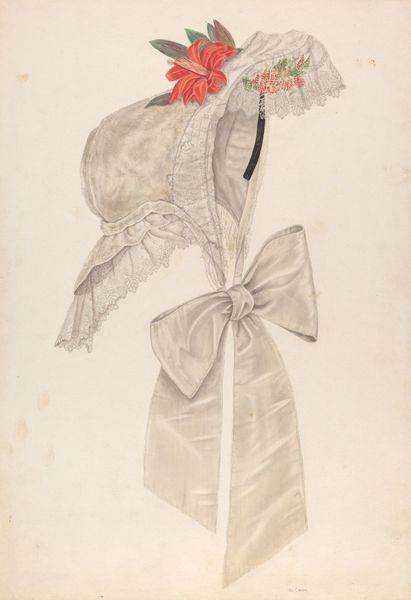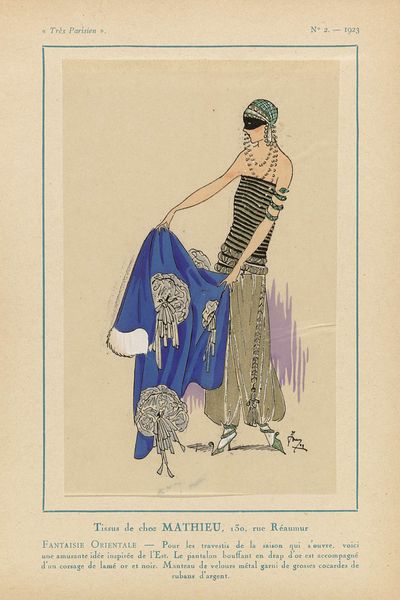
drawing, print
#
portrait
#
drawing
#
art-nouveau
# print
#
figuration
#
historical fashion
#
watercolour illustration
#
decorative-art
Dimensions: Sheet: 5 1/2 × 3 9/16 in. (14 × 9 cm)
Copyright: Public Domain
Curator: Take a moment with Otto Lendecke’s "Fashion (Mode)" created in 1912. It’s currently housed here at the Metropolitan Museum of Art. Editor: My first impression is the striking color combination. The juxtaposition of the vertical red and pink stripes with the bold, dark central panels is really quite daring! Curator: It's a marvelous example of Art Nouveau and the decorative arts influence on fashion illustration during that period. It reflects the emphasis on elegant lines and stylized forms popular then. These images appeared in fashion journals aimed to elevate clothing to fine art. Editor: Yes, the stylized form is prevalent. The flattening of space and the simplification of shapes draw focus to the garment's structure itself. The silhouette is so emphasized – that high collar and the slight flare of the skirt create an arresting image. Curator: The color choices and garment construction played a crucial role in the evolving roles of women at that time. The color palette represents bold choices of feminine empowerment, and its streamlined design freed women from earlier restricting garments, embracing new standards of dress. Editor: Indeed. Look closely at the treatment of line. The artist doesn't just define the edge of the form; it describes the garment’s movement as well. Observe how the drape of the shawl echoes the implied curves of the figure beneath. Curator: Considering the context, these illustrations promoted mass consumerism. The original drawings likely held great sway for a discerning customer, offering her not merely clothing, but participation in a more socially prominent narrative. Editor: Thinking about its technical aspects – note how watercolor defines the image and establishes dimensionality. Yet the precision of the print process overlays graphic definition and ensures consistent presentation. Curator: I hadn’t thought about the blend of materials and the role the art played in a world that was very concerned about societal role in gender dynamics. Thanks for elucidating on that! Editor: And thank you for adding historical depth—it enriches how we understand this art as not merely decorative, but communicative!
Comments
No comments
Be the first to comment and join the conversation on the ultimate creative platform.
